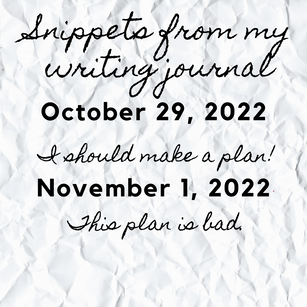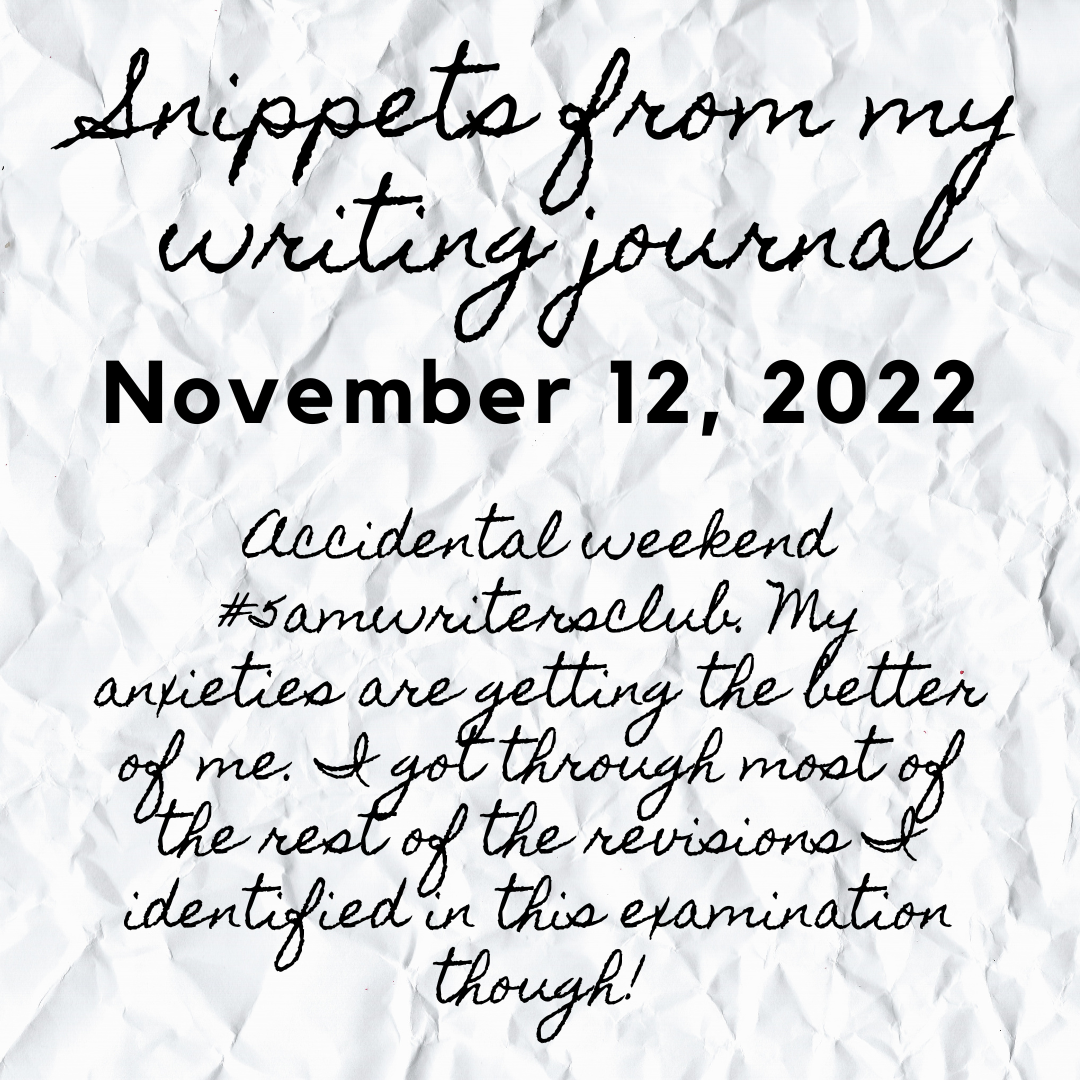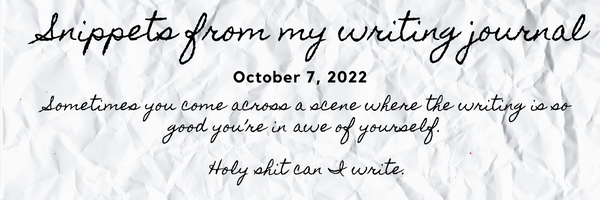What you're in for
The StatisticsMany authors don’t readily reveal this information, and as an author navigating writing and revising (and really, the publishing world), this is something I'd like to know. Maybe my mind is more analytical than others.
October 31, 2022 –November 6, 2022 I read through the fundamental questions in Intuitive Editing and created a character profile spreadsheet in my excel revision workbook. I completed the fundamental questions for Sophie and found at least 5 revisions to make, mostly in the first act. Then, I outlined Sophie’s character arc using K.M. Weiland’s Creating Character Arcs. Underneath the character arc, I included a section to review her enneagram arc, which will help me determine whether the beat shows growth or stress. I also reviewed the Character week for Slow Novel Lab and completed some exercises within the lecture. I put all my revision tasks in a separate spreadsheet and labeled them by type of macroedit, character/stakes/plot name, changes to make, scenes affect, what to change in each scene, and a spot to mark the revision complete. November 6, 2022 I went through the 30 revisions I identified through my character arc/fundamental questions analysis, filled out all the scenes affected, and what needs to be changed in each scene. Overall, there are about 50 tasks to complete the revisions. Then I labeled and color-coded them into tiers:
November 7, 2022 – November 13, 2022 I worked through all fifty tasks and added a few more revision tasks to my list that involve plot or other character revisions so that I didn’t forget them. My goal was to complete them on November 11, 2022, but I managed to finish them over the weekend. What I learned
Sophie’s character arc stakes were not personal enough at the beginning, so when I raised the stakes after the inciting incident, it didn’t hit right. Her ghost needed to be clearer as well—she needed more than feeling insecure to explain away her resistance to pursuing music as a career, something she so obviously wants. Her reasons for that were in the book, just not clear at the beginning. I also needed to make her first act of agency happen more quickly. She has a dual point-of-no-returns, and I had one happening far too late in the book. Basically, this book needs condensing. I have a feeling it's going to get messier, then suddenly, will be a clear picture. What I'm doing next
So, I’ve decided to evaluate the stakes and plots for the main external plot first. I’ll start by re-reading the chapter for stakes in Intuitive Editing, use it to evaluate the stakes as they are now, and then move on to the plot macroedits.
Now to figure out why my Scrivener won’t pull all my scene synopses when I compile them into an outline. Why did they make a writer’s software so techy?
0 Comments
What you're in for
Why I am doing this
The original version of the book was called The Curses of Being a Side Dish, and it was completed in 2012, queried, and then drawered until 2017 when I started writing again. I rewrote what I had, wrote new material, got feedback on my synopsis from an editor through SCBWI, rewrote it again, sent it out to betas, revised based on that feedback, and started querying in 2021. I know I tried different revision advice and practices I gathered from podcasts, books, webinars, and seminars, but I didn’t document anything. I do know that I had a hard time wrapping my head around the advice I received. The advice felt vague and opaque, and I had a hard time creating actionable tasks from it. Anyway, when I went to revise Girls to the Front, I had no idea what worked for me. Luckily, my writing group inspired me to keep a writing journal this time around. My hope with this revision blog is to be transparent about what I do and learn through this revision so that I and other authors may find a revision process that works for them. So here’s your official welcome to the Girls to the Front revision blog. The statisticsMany authors don’t readily reveal this information, and as an author navigating writing and revising (and really, the publishing world), this is something I'd like to know. Maybe my mind is more analytical than others.
August 1, 2022 – October 25, 2022 I worked within Scrivener and excel to revise Girls to the Front. I started struggling with the outline and arrangement of scenes and chapters around Chapter 14. Around chapter 19, I started feeling like the pacing was off, and it bugged me enough that I create spreadsheets to start tracking topics, themes, and character appearances, chapter word counts, scene word counts, and scene counts per chapter. On October 22, 2022, I started to forego revision altogether and just complete tracking the charts. I also wrote a synopsis for each scene on the little notecards in Scrivener, which I compiled into an outline. What I learned
So, I got easily distracted and this way to rework the plot broke down pretty fast. This may be a better pre-first-draft exercise for me. I have no idea what to do about my charts that tracked themes, characters, misc. topics, and word and scene counts. I think this will be revealed as work later.
One last note... |
AuthorSarah Hawkins is a geek for the written word. She's an author and freelance editor who seeks to promote and uplift the authors around her. ArchivesCategories
All
|













 RSS Feed
RSS Feed
